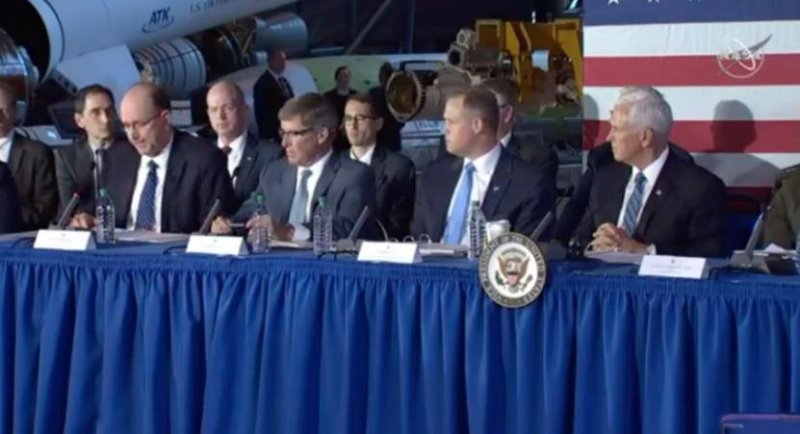Military and intelligence officials, with Vice President Mike Pence at far right, announced a joint command of the U.S. Space Command and the National Reconnaissance Office on Tuesday. Photo courtesy of NASA
Aug. 21 (UPI) -- A joint concept of operation will allow the new U.S. Space Command and the National Reconnaissance Office to form a unified command structure.
Acting Director of National Intelligence Joseph Maguire outlined the plan during a meeting on Tuesday at the National Air and Space Museum in Chantilly, Virginia. Intelligence community assets would be under the operational and tactical control of the military during a conflict if U.S. satellites came under attack, an unprecedented action.
"I'm pleased to tell you that after months of analysis and deliberations, the intelligence community and the DoD agreed to align U.S. Space Command and the NRO into a new unified defense concept of operations," Maguire said.
He added that the joint commend would operate from the National Space Defense Center in Colorado Springs, Colo., which "will become the center of gravity for defending our vital interests in space."
The NRO builds and operates U.S. spy satellites.
The Space Command will begin operations on Aug. 29 and is charged with the missions of "missile warning, satellite operations, space control and space support," Chairman of the Joint Chiefs of Staff Gen. Joseph Dunford said in a separate meeting on Tuesday.
The speed of attacks on satellites is the major reason for the change in command structure, former NRO Director Marty Faga said on Tuesday.
"A big problem at least currently for all of our systems, military and IC [intelligence community], is that many forms of attack will come with no warning like cyber, jamming and laser," Faga said. Moreover, kinetic ASAT [anti-satellite] attack in LEO [low earth orbit] takes eight minutes from launch to strike. It will be quite a while before our ability to detect, track and respond will be that fast."















